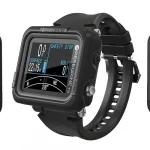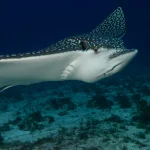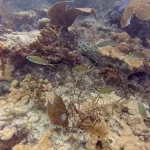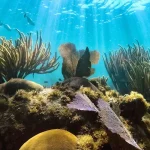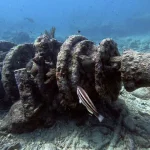Table of Contents
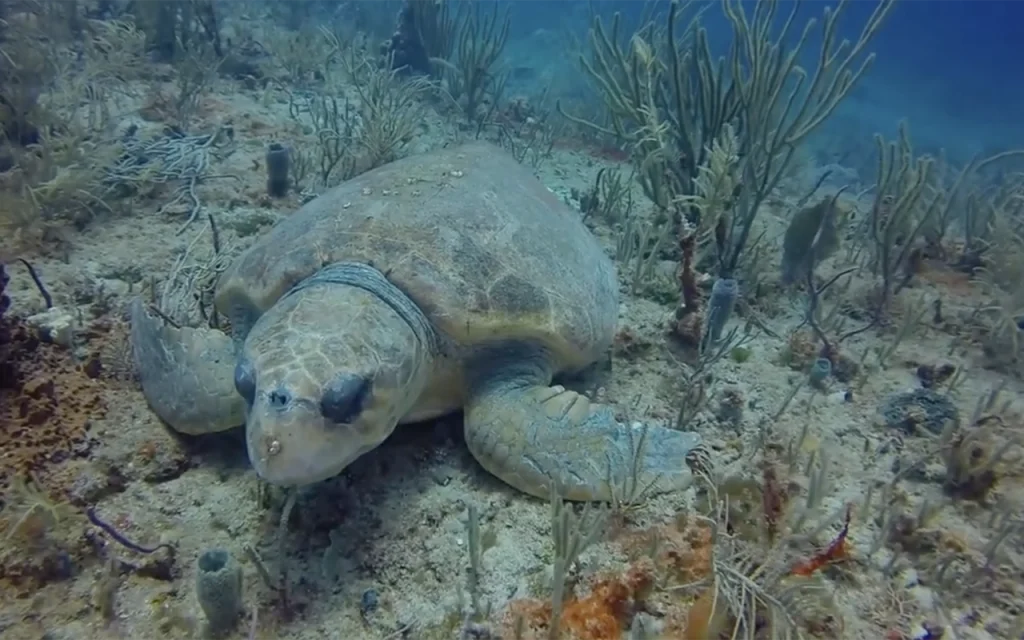
The combination of its accessible depth, upright position, rich marine life, and proximity to other dive sites makes the Berry Patch Tug a unique and rewarding dive experience for those exploring the artificial reefs off South Florida’s coast.
Article at a Glance
- Historical Background: The Berry Patch Tug, originally named A.L. Spencer, was built in 1940 and served to tow sand-laden barges from the Bahamas to Florida before being sunk as an artificial reef in 1987.
- Diving Experience: This wreck is suitable for intermediate divers, requiring at least Open Water certification, and offers a depth range of 50 to 70 feet, making it accessible yet challenging.
- Unique Features: The tugboat remains upright on the sandy bottom, with its bow facing east-southeast, allowing divers to explore its structure and gain insight into its original design.
- Marine Ecosystem: The wreck has become a thriving habitat for diverse marine life, including tropical fish, nurse sharks, groupers, and eels, providing excellent opportunities for underwater photography.
- Wreck Penetration: Divers can safely enter the wheelhouse through rear and side entrances, although caution is advised due to the presence of eels.
- Proximity to Other Wrecks: Located near other dive sites like the Ancient Mariner and Quallman Barge, the Berry Patch Tug is often included in multi-wreck dive trips, enhancing the diving experience.
- Dive Planning: Dive operations typically involve good air management and navigation skills, with dive times ranging from 45 minutes to 1 hour, ensuring safety and enjoyment for divers exploring this unique site.
Shipwreck Location Coordinates and Depth
Depth
The wreck sits at the following depths:
Location Coordinates
The Berry Patch Tug Wreck is located off the coast of Deerfield Beach, Florida. Its coordinates are:
- Latitude: 26° 18.0872′ N
- Longitude: 80° 03.6851′ W
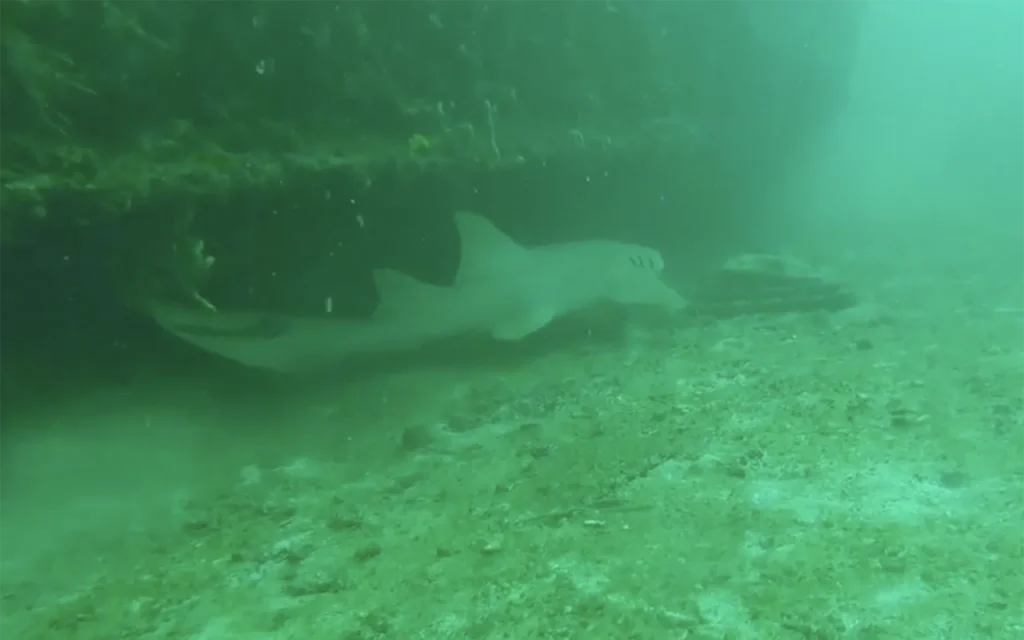
What Do Scuba Divers Say About This Ship
General Impressions
- Upright Position: Divers appreciate that the Berry Patch Tug sits upright in the sand, making it easily accessible for exploration. The wreck is covered with marine growth and attracts a variety of tropical fish, adding to the underwater scenery.
- Dive Experience: The wreck is described as suitable for divers with at least Open Water certification or equivalent experience. It offers opportunities for light penetration into the wheelhouse, although divers are cautioned about the presence of eels.
Marine Life and Environment
- Biodiversity: The site is noted for its vibrant marine life, including nurse sharks and groupers. Divers often enjoy photographing the diverse ecosystem that has developed around the wreck.
- Visibility and Conditions: The wreck is located about 50 feet from the main reef, allowing divers to easily navigate between sites. However, divers are advised to be proficient in air management and navigation, especially if they plan to visit multiple wrecks during a single dive trip.
Photography and Exploration
- Photography Opportunities: The Berry Patch Tug is considered an excellent site for underwater photography due to its colorful marine life and the interesting structure of the wreck itself. Divers often comment on the aesthetic appeal of the site, particularly with the growth covering the wreck.
What Kind of Marine Life Can Be Found on The Ship
Fish Species
- Tropical Fish: The wreck is covered in marine growth and serves as a habitat for various tropical fish species.
- Groupers: Several types of groupers are commonly spotted around the wreck.
Larger Marine Life
Other Marine Organisms
- Eels: Divers are cautioned about the presence of eels, particularly in the wheelhouse area.
- Marine Growth: The entire structure of the wreck is covered with marine growth, which provides a foundation for the ecosystem.
Ecosystem Characteristics
- Artificial Reef: As an intentionally sunk artificial reef, the Berry Patch Tug has developed into a well-established habitat over the years since its sinking in 1987.
- Photographic Opportunities: The site is described as excellent for underwater photography, suggesting a visually rich environment with diverse marine life.
Key Information
| Feature | Details |
|---|---|
| Name | Berry Patch Tug (originally A.L. Spencer) |
| Type of Dive | Standard Wreck Dive |
| Skill Level | Intermediate: Open Water or Advanced Junior Open Diver (13 years and older) |
| Location Coordinates | 26° 18.0872′ N, 80° 03.6851′ W |
| Depth | 50 feet (top of the wreck) to 70 feet (sand) |
| Dimensions | Length: 62-65 feet, Width: 16-16.5 feet |
| Sinking Date | August 15, 1987 |
| Original Purpose | Towed sand-laden barges from the Bahamas to Florida |
| Current Condition | Upright on the sandy bottom, bow facing east-southeast, covered in marine growth |
| Marine Life | Habitat for tropical fish, nurse sharks, groupers, and eels |
| Penetration Points | Accessible from the rear and two side entrances to the wheelhouse |
| Nearby Wrecks | Close to Ancient Mariner (150 feet northwest) and Quallman Barge (approximately 600 feet south) |
| Photography Opportunities | Excellent site for underwater photography due to marine life and wreck structure |
| Dive Plan | Typically part of a multi-wreck dive, often combined with Ancient Mariner and Quallman Barge |
| Departure Location | Pompano Beach |
What Berry Patch Tug Shipwreck a Unique Diving Experience
Location and Accessibility
- Situated off the coast of Deerfield Beach, Florida, about 0.82 nautical miles offshore.
- Part of a cluster of wrecks, including the Ancient Mariner and Quallman Barge, allowing divers to potentially visit multiple sites in one dive.
Physical Characteristics
- A relatively small tugboat, 62-65 feet long and 16-16.5 feet wide.
- Sits upright on the sandy bottom at 70 feet depth, with its top reaching to about 50 feet below the surface.
Dive Experience
- Suitable for intermediate level divers with Open Water certification or equivalent experience.
- Offers opportunities for light penetration into the wheelhouse, accessible from rear and side entrances.
Marine Life
- Covered in marine growth, providing a habitat for various tropical fish species.
- Home to nurse sharks, groupers, and eels, offering diverse marine life encounters.
Historical Interest
- Originally built in 1940 and named A.L. Spencer, used for towing sand-laden barges from the Bahamas to Florida.
- Intentionally sunk as an artificial reef on August 15, 1987, giving it over three decades to develop as a marine habitat.
Photography Opportunities
Part of a Larger Dive Experience
- Often included in the “Wreck Trek” Deerfield, a multi-wreck drift dive that can cover up to three wrecks in one dive, testing divers’ navigation skills.
How Does The Berry Patch Tug Compare to Other Shipwrecks in Florida
Historical Significance
- Many Florida shipwrecks, like those from the 1733 Spanish fleet or the 1622 Atocha, have immense historical value dating back to the colonial era.
- The Berry Patch Tug, sunk in 1987, is a much more recent artificial reef without the same historical importance.
Size and Type
- Florida is home to large shipwrecks like the SS Commodore and the Oriskany, which are massive vessels with rich histories.
- In contrast, the Berry Patch Tug is a relatively small 62-65 foot tugboat, offering a more compact dive experience.
Treasure and Artifacts
- Famous Florida wrecks like the Atocha have yielded significant treasures, including gold, silver, and emeralds.
- The Berry Patch Tug was intentionally sunk as an artificial reef and does not contain historical artifacts or treasure.
Marine Life Development
- Many older wrecks in Florida have had centuries to develop complex ecosystems.
- While the Berry Patch Tug hosts various marine life, its ecosystem is only a few decades old.
Dive Experience
- Some Florida wrecks require advanced diving skills due to depth, currents, or complexity.
- The Berry Patch Tug is suitable for intermediate divers, offering a more accessible experience.
Location
- Florida’s most famous wrecks are often in the Keys or off the Atlantic coast.
- The Berry Patch Tug is located off Deerfield Beach, offering a different geographical perspective.
What is The Full History of This Ship
Origin and Early Years
- Built in 1940 and originally named A.L. Spencer.
- Used to tow barges loaded with sand from the Bahamas to Florida.
Specifications
Transition to Artificial Reef
- Sunk on August 15, 1987, as an artificial reef.
- Now rests in 70 feet of water off the coast of Deerfield Beach, Florida.
Current State
- Sits upright on the sandy bottom, with the top reaching about 50 feet below the surface.
- The bow faces east-southeast.
- Has a slight list to port.
Surrounding Area
- Located approximately 0.82 nautical miles offshore from Deerfield Beach.
- About 50 feet west of the main reef.
- In close proximity to other artificial reefs:
Current Use
- Serves as an artificial reef and dive site.
- Popular among intermediate-level divers.
- Offers opportunities for light penetration into the wheelhouse.
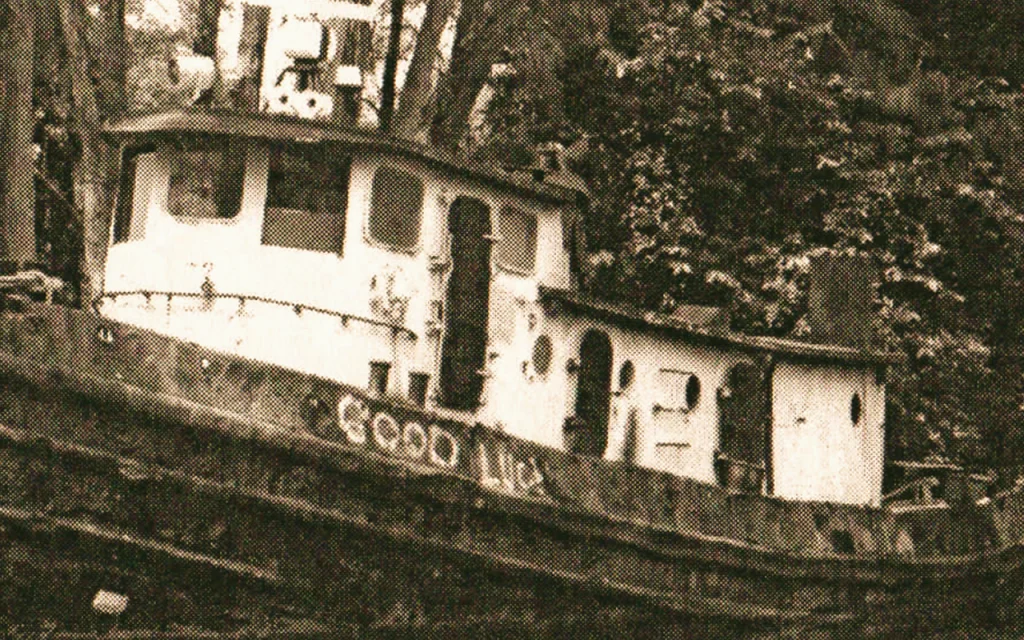
What Historical Features Can Still Be Identified on the Berry Patch Tug Wreck
Structural Elements
- Wheelhouse: The wreck retains its wheelhouse, which is accessible from rear and side entrances. This allows for light penetration and exploration by divers.
- Upright Position: The tug sits upright on the sandy bottom, preserving much of its original structure and shape.
- Bow: The bow of the wreck is intact and faces east-southeast.
Original Dimensions
- Length: The wreck maintains its original length of 62-65 feet.
- Width: The original width of 16-16.5 feet is still identifiable.
Historical Context
- Construction Era: While not directly visible, the wreck’s construction in 1940 is reflected in its overall design and structure.
Unique Features
Dive Site Elements
- Penetration Points: The wheelhouse can be entered from the rear or two side entrances, allowing divers to explore the interior.
What Safety Measures Are in Place for Divers Visiting the Berry Patch Tug
- Skill Level Requirements:
- The dive is recommended for intermediate level divers.
- Open Water certification or equivalent experience is required.
- Divers should be at least 13 years old for Open Water or Advanced Junior Open Water certification.
- Depth Considerations:
- The wreck sits at depths between 50-70 feet, with the top at 50 feet and the sand at 70 feet.
- This depth range is within recreational diving limits but requires proper depth management.
- Dive Planning:
- The site is often part of a multi-wreck dive, requiring good air management and navigation skills.
- Divers are advised to be proficient in these areas, especially if attempting to visit all three wrecks in the Wreck Trek.
- Wreck Penetration:
- Light penetration into the wheelhouse is possible, but divers are cautioned about the presence of eels.
- Entries to the wheelhouse are available from the rear and two side entrances, providing multiple exit points.
- Current Awareness:
- The dive plan may change based on current conditions, with the captain often making decisions based on visibility and currents.
- Dive Guides and Boat Support:
- While not explicitly stated, most dive operations in the area provide professional guides and boat support for safety.
- Time Limits:
- Typical dive times are 45 minutes to 1 hour per site, helping to ensure safe bottom times.
- Navigation Aids:
- Rebar stakes are placed in the sand between wrecks to help guide divers, especially when visibility is limited.
- Proximity to Other Sites:
- The Berry Patch Tug is close to other wrecks and the main reef, allowing for alternative dive plans if conditions at the primary site are unfavorable.
Dive Shops That Provide Diving Trips to This Shipwreck
- South Florida Diving Headquarters
- This dive shop mentions the Berry Patch Tug in their dive site listings, suggesting they likely offer trips to this wreck.
- Website: www.southfloridadiving.com
- Bird’s Underwater Manatee Dive Center
- Location: Crystal River, FL
- Phone: (352) 563-2763
- Website: https://birdsunderwater.com
- Flipper’s Diving LLC
- Location: Jacksonville, FL
- Phone: (904) 206-7102
- Website: http://www.flippersdiving.com
North Florida Wrecks
- USS Oriskany
- USS Massachusetts
- SS Tarpon
- SS Gulf America
- Empire Mica
- USS Chippewa
- Avocet
- Black Bart
- The Vamar
- San Pablo
- USS Narcissus
- The Loftus Wreck
- The Dorothy Louise
- The Mizpah
- MV Janet
- The Eidsvag
- YDT-14 and YDT-15
- USS Strength
- Miss Louise
- The Lulu
- PC-1174
- Three Coal Barges
- USS Accokeek (ATA-181)
- El Dorado
- The Grey Ghost
- The Pete Tide II
- Red Sea Tug

